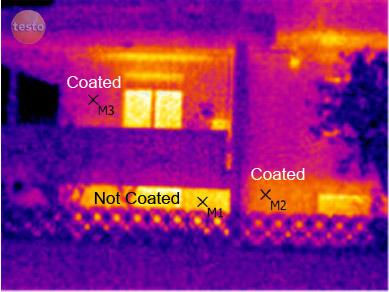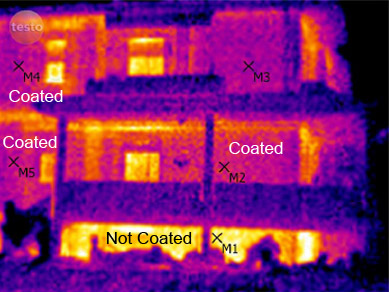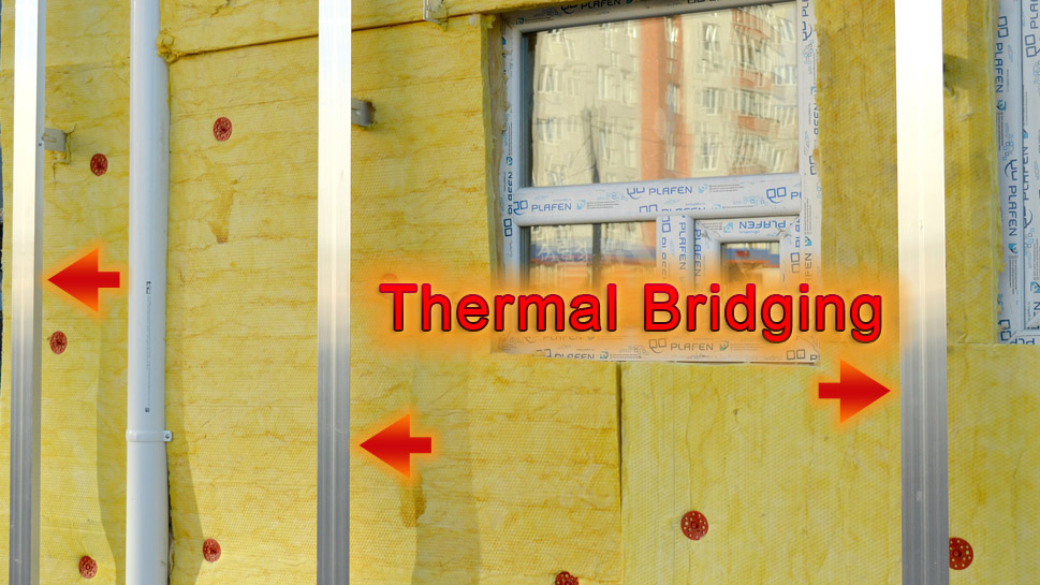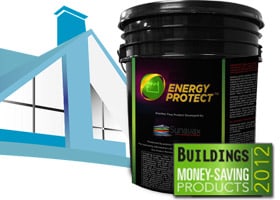Even the most well insulated homes and buildings can have problems with heat loss or gain due to thermal bridging. Buildings are complex structures that include beams, studs, and other components not easily covered by traditional fibrous insulation materials. Putting batt insulation between wall studs doesn’t stop heat loss completely.
Thermal bridging can significantly reduce the overall energy efficiency of a home or building, costing the owner more than expected in both heating and cooling costs.
For example: Light-gauge steel framing is very popular to use in construction due to its high strength and lightweight nature, but it has a big thermal bridging problem. According to The Construction Specifier, it has a thermal conductivity 1,000 times that of typical building insulation.
That’s a lot of heat loss in a brand new building!
Some of the key areas of heat loss due to thermal bridging in buildings include:
- Concrete Slabs
- Wall Studs
- Fenestration Products (curtain walls, window frames)
- Roofing Components (fasteners, parapets)
- Steel Framing
While earlier construction requirements may not have addressed this issue, revisions to building codes in recent years are beginning to require a uniform thermal insulation value for an entire building envelope. So what do you do to accomplish that?
Syneffex™ Coatings Stop Thermal Bridging in Its Tracks!
Syneffex™ Energy Protect™ thermal insulation coating combats thermal bridging because it can be applied to those difficult to insulate building materials. It’s easy to use to provide thermal insulation of the areas where heat loss/gain is an issue due to conduction through materials like building studs or framing.
The coating has been successfully tested by multiple independent accredited laboratories using multiple standards for thermal insulation testing. In one test over 8cm thick cement wall sections, at a standard 3 coat coverage, it showed a reduction in heat transfer of 34.8%. Check out that and other testing here.
The beauty of a spray-on thermal insulation coating is that it’s easy, inexpensive, and fast. Energy Protect™ can easily be sprayed over an entire wall, ceiling, or roof assembly to seal up those areas where thermal bridging was an issue.

Thermal Imaging of Energy Protect™
This thermal imaging of a home in winter shows the heat transfer through the uncoated areas as compared to the Energy Protect™ coated areas.
Not Insulated: M1 (9.3C/48.7F)
Insulated with Energy Protect™: Average of M2 & M3 (6.7C/44F)
Heat Loss Savings (measured in Celsius): 28%

Thermal Imaging of Energy Protect™
This thermal imaging of a home in winter shows the heat and energy lost through the uncoated areas as compared to the Energy Protect™ coated areas.
Not Insulated: M1 (8.2C/46.8F)
Insulated with Energy Protect™: Average of M2- M5 (5.6C/42F)
Heat Loss Savings (measured in Celsius): 31.7%
Try Energy Protect™ Today!
Check out this versatile coating, which also happens to be moisture, mold & mildew resistant, and buy a 5-gallon to try for yourself.
Call Us for Sustainable Solutions
Would you like a quote for Energy Protect™ to reduce thermal bridging? We can help!
We are here and ready to help you save money, time, and frustration. Drop us a line here or give us a call today at 800-858-3176.





